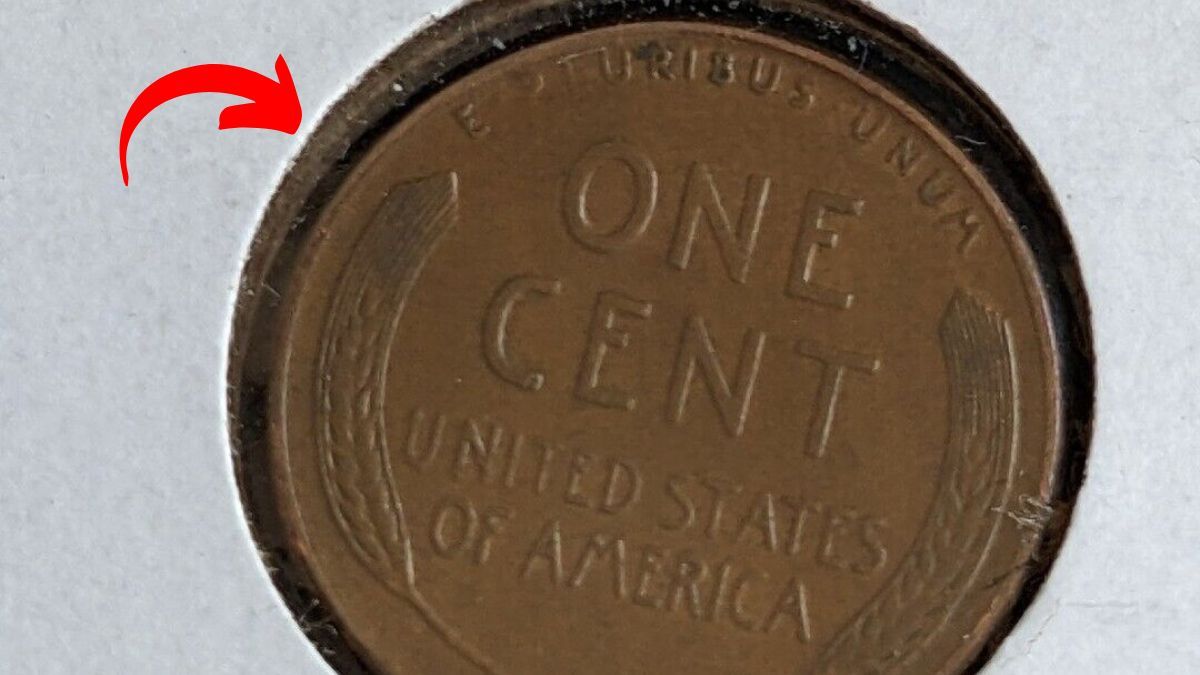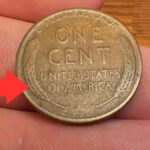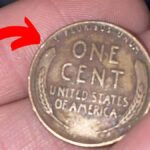The Lincoln Wheat Penny Valued at $2.2 Million: In the world of numismatics, few coins capture the imagination quite like the 1943 Copper Lincoln Wheat Penny. Worth an astounding $2.2 million, this rare piece of American history represents more than just currency—it stands as a testament to a wartime mistake that created one of the most valuable coins in existence. Even more intriguing is the fact that some of these precious pennies might still be circulating in everyday pocket change, waiting to be discovered by a fortunate individual.
The History of the Lincoln Wheat Penny
The story begins in 1909 when the U.S. Mint introduced the Lincoln Wheat Penny to commemorate the centennial of President Abraham Lincoln’s birth. The coin’s distinctive design featured Lincoln’s profile on the front and two elegant wheat stalks on the reverse, earning it the nickname “Wheat Penny.” For nearly five decades, until 1958, these pennies were a common sight in American commerce.
The Wartime Connection
During World War II, copper became a critical material for the war effort, primarily needed for ammunition and military equipment. In response, the U.S. government ordered the Mint to produce steel pennies in 1943 instead of the traditional copper ones. However, this transition led to one of the most valuable mistakes in American coinage history.
| Year | Standard Material | Rare Version | Estimated Value |
|---|---|---|---|
| 1943 | Steel with zinc coating | Copper | Up to $2.2 million |
| 1944 | Copper | Steel | $75,000-$125,000 |
| 1909-S VDB | Copper | N/A | $50,000+ |
| 1914-D | Copper | N/A | $150,000 |
| 1922 No D | Copper | N/A | $30,000+ |
The Million-Dollar Mistake
In the chaos of wartime production, a small number of copper planchets (blank coins) from 1942 remained in the pressing machines. When production began for 1943 pennies, these copper planchets were accidentally struck with the new year’s dies, creating the legendary 1943 Copper Wheat Penny. Today, numismatists estimate that only 15 to 20 genuine examples exist, making them among the rarest and most valuable U.S. coins.
Authentication and Identification
Identifying a genuine 1943 Copper Wheat Penny requires careful examination and expert verification. The process involves several crucial steps to distinguish these valuable specimens from common steel pennies or counterfeits.
Physical Characteristics
The genuine 1943 Copper Penny shares most physical characteristics with other Wheat Pennies, but its composition makes it unique. The copper version weighs approximately 3.11 grams and exhibits the warm, reddish-brown color characteristic of copper coins. Steel versions from the same year appear silvery and typically show signs of rust or discoloration.
Scientific Testing
The most reliable initial test involves using a magnet. Steel pennies from 1943 are magnetic, while genuine copper pennies are not. However, this test alone isn’t conclusive, as sophisticated counterfeiters may plate copper over steel cores. Professional authentication involves advanced metallurgical testing and microscopic examination of the coin’s surface details.
Market Value and Historical Sales
The value of 1943 Copper Wheat Pennies has risen dramatically over the decades. Notable sales include:
Record-Breaking Transactions
Some of the highest prices paid for these rare pennies have exceeded $1 million. In recent years, well-preserved specimens have commanded increasingly higher prices, with the current record standing at $2.2 million. This astronomical value reflects both the coin’s extreme rarity and its significant historical importance.
Investment Potential
While finding a genuine 1943 Copper Penny is extremely unlikely, the potential reward drives many collectors to examine every 1943 penny they encounter. This treasure hunt aspect has helped maintain strong market interest and support high valuations for authenticated specimens.
Other Valuable Lincoln Wheat Pennies
While the 1943 Copper Penny stands as the most valuable, several other Wheat Pennies command impressive prices:
The 1909-S VDB Penny
The first year of Lincoln Penny production yielded another valuable variety. The 1909-S VDB, featuring the designer’s initials (Victor David Brenner), was minted in limited quantities at the San Francisco Mint. Well-preserved specimens regularly sell for over $50,000.
The 1914-D Penny
Minted in Denver, this rare variety commands prices up to $150,000 for specimens in excellent condition. Its value stems from a relatively low mintage and poor preservation rates.
The 1922 No D Penny
A striking error resulted in some 1922 pennies missing their Denver mint mark. These rare error coins can fetch over $30,000, depending on condition and strike quality.
Preservation and Collection
For collectors and potential sellers, proper preservation is crucial. Coins should be:
Storage Recommendations
Keep valuable pennies in appropriate holders that prevent contact with air and moisture. Avoid cleaning or attempting to improve the appearance of any potentially valuable coin, as this can significantly reduce its value.
Documentation
Maintain detailed records of any coin’s provenance, including previous owners, purchase details, and authentication certificates. This documentation can significantly impact a coin’s market value.
The Continuing Search
The possibility that undiscovered 1943 Copper Pennies still exist in circulation makes every old penny worth a second look. While the odds of finding one are extremely low, the potential reward has created an ongoing treasure hunt that spans generations.
The 1943 Copper Lincoln Wheat Penny stands as a remarkable testament to how a simple mistake can create extraordinary value. Its story combines elements of American history, wartime production changes, and numismatic rarity that continue to captivate collectors and casual observers alike. While finding one of these rare pennies might be a long shot, their existence reminds us that extraordinary value can sometimes be found in the most ordinary places.
For anyone interested in coin collecting or American history, the story of the 1943 Copper Penny serves as an inspiring reminder that significant historical artifacts may still be waiting to be discovered in everyday circulation. Whether you’re a serious collector or simply curious about old coins, taking a moment to check your change might one day lead to an extraordinary discovery.


